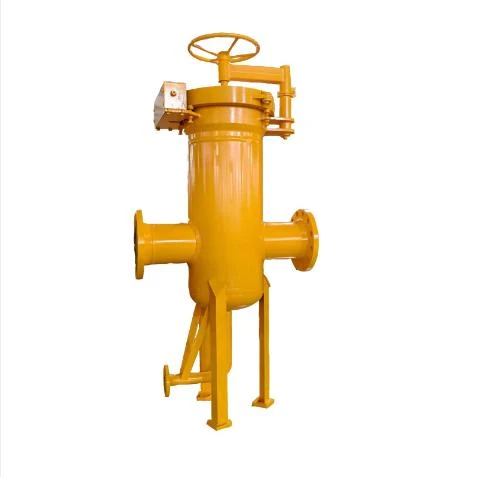
Dec . 04, 2024 08:40
Back to list
Heat Exchanger Design Concepts for Gas Applications in Engineering Systems
Understanding Heat Exchangers in Gas Applications
Heat exchangers are crucial components in numerous industrial applications, especially in processes involving gas. They facilitate the efficient transfer of thermal energy between two or more fluids, ensuring optimal thermal management without the two fluids mixing. This article will delve into the concept of heat exchangers, their types, applications in gas systems, and key considerations in their design.
What is a Heat Exchanger?
A heat exchanger is a device designed to transfer heat from one medium to another, which can be liquids, gases, or a combination of both. These devices play an integral role in heating and cooling systems, allowing energy recovery and improving process efficiencies.
In gas applications, heat exchangers can be found in various settings, including power plants, chemical processing facilities, HVAC systems, and more. They help manage the temperature of gases, thereby optimizing performance and safety.
Types of Heat Exchangers
1. Shell and Tube Heat Exchangers These consist of a series of tubes, one set containing the hot gas and the other carrying the cold fluid. They are commonly used in applications with high pressure and temperature.
2. Plate Heat Exchangers Made up of thin plates stacked together, they provide a large surface area for heat transfer in a compact design. They are highly efficient and suitable for gas applications with lower flow rates.
3. Air Cooled Heat Exchangers These utilize ambient air to dissipate heat from gases. They are commonly used when water is scarce or when the process requires a more straightforward cooling solution.
4. Fin Fan Coolers These are a type of air-cooled heat exchanger, where fans force air through finned tubes to enhance heat transfer. They are primarily used in the petrochemical and gas processing industries.
Applications in Gas Systems
.
- Gas Processing Plants Here, heat exchangers are employed to recover heat from gas streams, improving energy efficiency and reducing emissions. They help cool or heat natural gas before it is processed or distributed.
مبادل حراري للغاز

- Power Generation In power plants, heat exchangers are vital for recovering waste heat from exhaust gases to produce steam for turbines. This not only enhances the overall efficiency of the plant but also minimizes environmental impact.
- Chemical Manufacturing Many chemical reactions are temperature-sensitive. Heat exchangers regulate the heat to maintain optimal conditions for the desired reaction while managing the by-products generated.
- HVAC Systems In heating, ventilation, and air conditioning systems, heat exchangers transfer heat to and from air and refrigerants, ensuring a comfortable indoor climate.
Key Considerations in Design and Operation
When designing a heat exchanger for gas applications, several critical factors must be taken into account
1. Operating Conditions The temperature and pressure of the involved gases will significantly influence the heat exchanger's design, materials, and overall efficiency.
2. Thermal Efficiency The effectiveness of a heat exchanger in transferring heat is paramount. Engineers must optimize the surface area and flow arrangement to maximize heat exchange.
3. Cleanliness and Maintenance Gases can carry particulates that may foul the heat exchanger surfaces. The design should facilitate cleaning and maintenance to maintain performance.
4. Material Selection Gases may be corrosive or reactive. Choosing the appropriate materials for construction is essential to ensure durability and longevity.
5. Regulatory Compliance Especially in industries like oil and gas, heat exchangers must meet stringent safety and environmental regulations, necessitating meticulous design and operation practices.
Conclusion
Heat exchangers are indispensable in managing thermal energy in gas applications. By optimizing heat transfer processes, they contribute significantly to energy efficiency, cost savings, and environmental sustainability. As technology advances, the design and materials used in heat exchangers will continue to evolve, meeting the growing demands of modern industries while adhering to rigorous safety and efficiency standards. Understanding their operation and applications is key for engineers and technicians working in these vital sectors.
Latest news
-
Safety Valve Spring-Loaded Design Overpressure ProtectionNewsJul.25,2025
-
Precision Voltage Regulator AC5 Accuracy Grade PerformanceNewsJul.25,2025
-
Natural Gas Pressure Regulating Skid Industrial Pipeline ApplicationsNewsJul.25,2025
-
Natural Gas Filter Stainless Steel Mesh Element DesignNewsJul.25,2025
-
Gas Pressure Regulator Valve Direct-Acting Spring-Loaded DesignNewsJul.25,2025
-
Decompression Equipment Multi-Stage Heat Exchange System DesignNewsJul.25,2025

